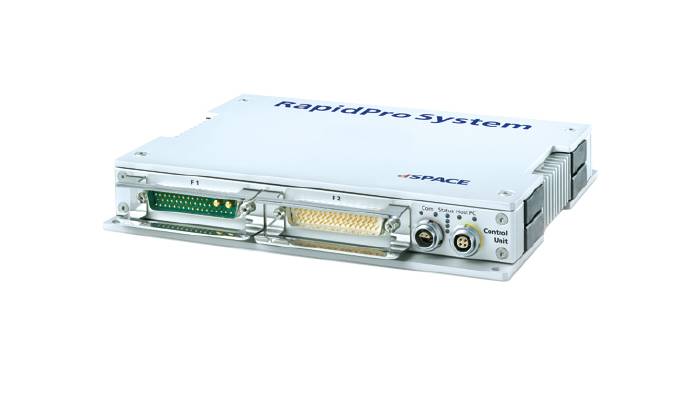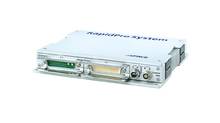RapidPro Control Unit
Intelligentes I/O-Subsystem für dSPACE-Prototyping-Systeme
- Generieren, Erfassen und Konditionieren komplexer I/O-Signale (bis zu 6 Module)
- USB-Konfiguration und LVDS-Slave- Kommunikations-schnittstellen
- Leistungsstarkes FPGA
Anwendungsbereiche
In Anwendungen wie Motor- oder Fahrdynamikregelungen können komplexe I/O-Aufgaben vom Prototyping-System auf die RapidPro Control Unit ausgelagert werden. Zudem bietet die RapidPro Control Unit Platz für Signalkonditionierungsmodule, so dass unterschiedliche Sensoren an bestimmte Prototyping-Systeme angepasst werden können.
Vorteile
| Parameter | Specification | ||
|---|---|---|---|
| General |
|
||
| Microcontroller module |
|
||
| Software support | Configuration |
|
|
| Diagnostics |
|
||
| I/O Real-Time Interface |
|
||
| Electrical characteristics | Power supply |
|
|
| Mechanical characteristics | Enclosure |
|
|
| Physical size (with cover and base plate) |
|
||
| Physical size (without cover and base plate) |
|
||
| Environmental characteristics | Ambient temperature |
|
|
| Vibration resistance1) |
EN 60068-2-6 |
|
|
|
ISO 16750-3:2007 / 4.1.2.4 Test IV |
|
||
| Shock resistance1) |
EN 60068-2-27 |
|
|
|
ISO 16750-3:2007 / 4.2.2 |
|
||
1) For more detailed information about test conditions and tested variants, please inquire.
-
- Online-Ansicht
- Download
Treiben Sie Innovationen voran. Immer am Puls der Technologieentwicklung.
Abonnieren Sie unser Expertenwissen. Lernen Sie von erfolgreichen Projektbeispielen. Bleiben Sie auf dem neuesten Stand der Simulation und Validierung. Jetzt dSPACE direct und dSPACE direct aeropace & defense abonnieren.


